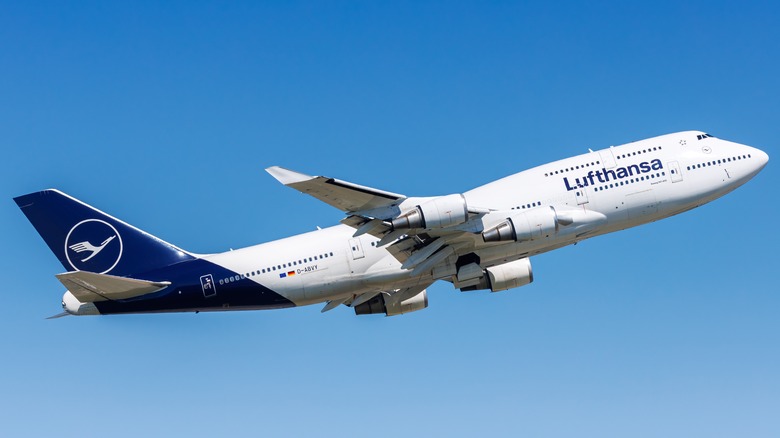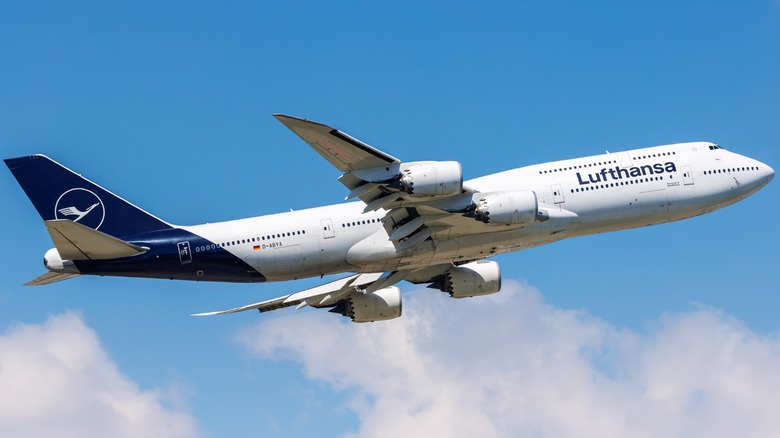How Fast Does A Boeing 747 Fly? Take-Off Vs Max Cruise Speed Explained
The Boeing 747 is one of the primary long-range wide-body airplanes flown throughout the world. These four-engine passenger planes can carry over 360 passengers and crew and were the first aircraft to be dubbed a "Jumbo Jet." More than 1,500 have been built since the aircraft was first introduced in 1970 for Pan Am, and it remains a popular workhorse aircraft for a number of airlines around the world as well as the base model for several aircraft designated USAF Air Force One.
Like most aircraft, there are numerous versions of the 747, each with modifications allowing for an increased passenger load among multiple classes. The 747-8 is the most recent variant, which is designed to be quieter and operate more economically and environmentally friendly. The fastest 747s can fly to a distance close to 9,000 miles. It accomplishes this despite the heavy load the Boeing 747 carries with its four powerful engines.
Initially, the 747 featured four Pratt & Whitney JT9D turbofan engines, but later models traded these out for General Electric CF6-50 and Rolls-Royce RB211-524G/H-T engines. These powerful engines empower the aircraft to reach 184 mph during takeoff and up to 660 mph at maximum cruising speed. That's a top speed of Mach 0.86, so it's incredibly fast, which is one of the reasons the 747 is flown across the Atlantic and Pacific Oceans: It can carry a lot and do so quickly, shortening flight times and making the 747 a truly desirable aircraft.
The difference between takeoff and cruising speed, explained
There are two primary speeds of concern when you're talking about a passenger plane: takeoff and cruising speed. The takeoff speed is that which the aircraft must reach in order to literally take off from the ground. This can be impacted by several key factors: the airplane's total shape as well as its wing shape, the direction of airflow, and the aircraft's size and weight. For the Boeing 747, under ideal conditions, the aircraft must reach a speed of 184 mph to take off.
Cruising speed is the speed the aircraft can reach and sustain for extended periods. As the aircraft rises to its standard altitude of 35,1050 feet, its speed increases exponentially. Once it reaches its cruising altitude, it can be pushed to a speed of 660 mph. This is an incredibly fast cruising speed for a commercial passenger jet.
For comparison, the average cruising speed of all commercial passenger planes is between 480 and 575 mph. Still, the 747 typically flies at around 570 mph while cruising. The speed is determined by several things, including the same factors mentioned previously for the plane's takeoff speed as well as the mission parameters. It may not be necessary, for example, to push a 747 to its maximum speed for a short flight, while wind conditions may also impact its ability to move at its fastest speed.

